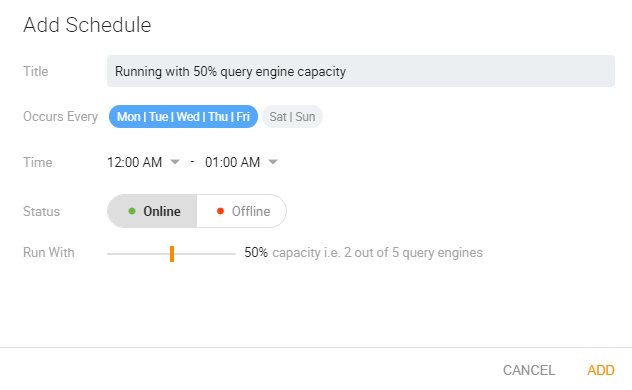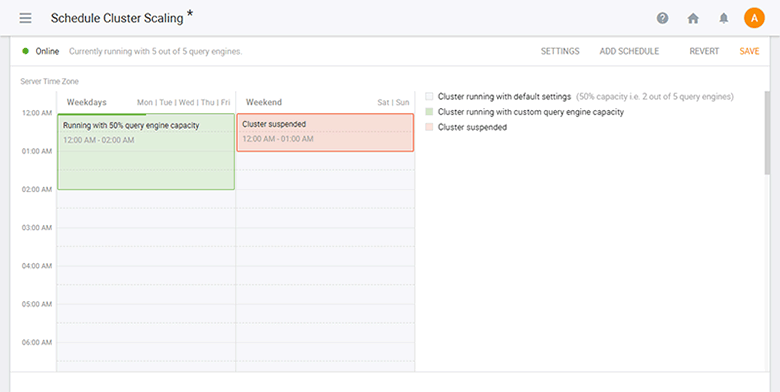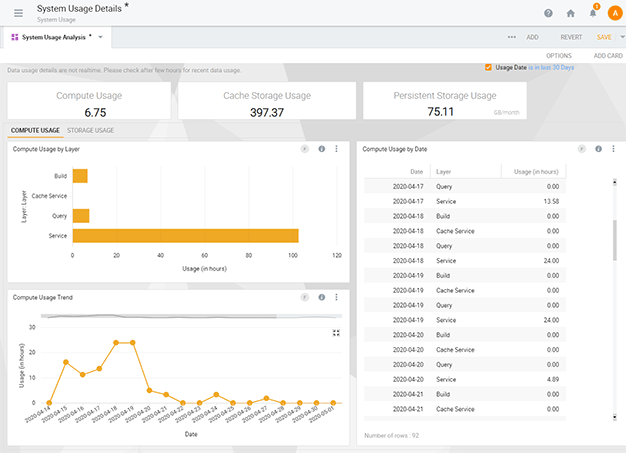Cloud has radically altered the way IT infrastructure is provisioned and managed over the last decade. Organizations world over are moving all their operations, including traditional analytics to cloud analytics.
For continuously expanding businesses with ever-increasing data, the cloud offers tremendous advantages. The two most significant benefits are cost-effectiveness and easy scalability. Organizations can rapidly alter their IT deployments to suit their needs and keep their focus on growing their businesses rather than continually tinkering with their infrastructure. A scalable architecture ensures improved performance and the ability to handle bursts of traffic or heavy loads instantaneously. At the same time, it helps minimize costs during off-peak hours when the load decreases.
Schedule-based scaling allows you to scale your cloud analytics in response to predictable load changes. In this blog, we will talk about the advantages of scaling in the cloud and how you can schedule scaling in Kyvos.
Benefits of Scalability in Cloud Analytics
The cloud platforms offer several benefits when it comes to scalability. You can use cloud services to scale data storage according to your needs, without investing any capital for expanding physical infrastructure. Besides this, you can also scale up the computing power as and when needed, to accommodate temporary spikes in load. Most importantly, shifting to the cloud, not only saves costs in terms of equipment but also provides savings in terms of power and personnel. You can easily track usage and keep a check on the resources that you may not be using so that you pay for only what you use.
Now that we know the benefits of scalability, let us see how scheduled scaling can help you tap the full potential of your cloud environment.
Scheduled Scaling Saves Costs
Cloud resources do not come cheap. If not planned properly, you would end up paying way more than you anticipated. A good cloud strategy must involve scaling resources as needed.
In cloud analytics, scheduled scaling makes it possible to scale resources at specific preset times or intervals. It allows you to pre-provision adequate capacity for anticipated demand. You can also configure schedules to reduce capacity when the demand decreases.
For example, when working with Kyvos, if you expect higher querying loads during the daytime, you can schedule the cluster to spin up more Query Engine instances to ensure optimized query performance. Similarly, you can also define schedules to reduce capacity during the off-peak hours. You may even choose to shut down the cluster over weekends if there are no users during that time.
How to Schedule Autoscaling in Kyvos
Kyvos allows you to manage scheduling and system capacity. You can specify the schedule when clusters run with a higher capacity, when they need to run with lesser capacity, and when they should be suspended. You can also set when the system should automatically sleep and wake-up.
To add a new schedule through the Kyvos UI, perform the following steps.
-
- From the Toolbox, choose Setup → Cluster Scaling.
- Click Add Schedule.
- In the Title field, enter a name that provides description, such as Running with 50% query engine capacity (as shown in the figure below).
- Click to choose which days the event occurs and specify the time.
- Choose whether the service should remain online or offline.
For example, you may want the service to be offline on the weekends at certain times. - In the Run with area, drag the slider to choose a query engine capacity.
- Click Add.

Figure 1. Adding a new schedule
The schedule is created and displayed, as shown in the following figure.

Figure 2. Sample schedules
Monitoring Resource Usage
Kyvos also allows you to monitor and track resource usage.
The System Usage Analysis dashboard displays details about both computing and storage resource usage. Computing usage includes resources spent on queries and cube builds.
You can also see the average usage for cache and persistent storage layers along with charts showing date-wise usage and trends.
To access the dashboard, choose Setup ➡ View Usage from the Toolbox. The System Usage Analysis dashboard opens in a new browser, as shown in the following figure.
You can also share and export the use report using the Options menu given on the top right of the page.

Figure 3. System Usage Analysis Dashboard in Kyvos
Scaling in the cloud saves costs while enhancing the flexibility of your analytics environment. You can pre-provision your cluster according to anticipated demands and workloads. Besides costs, scheduled scaling also helps organizations deliver consistent performance during peak loads.
To know more about scaling in Kyvos, request a demo now.
Read More – Top 5 Cloud Analytics Trends in 2022.
